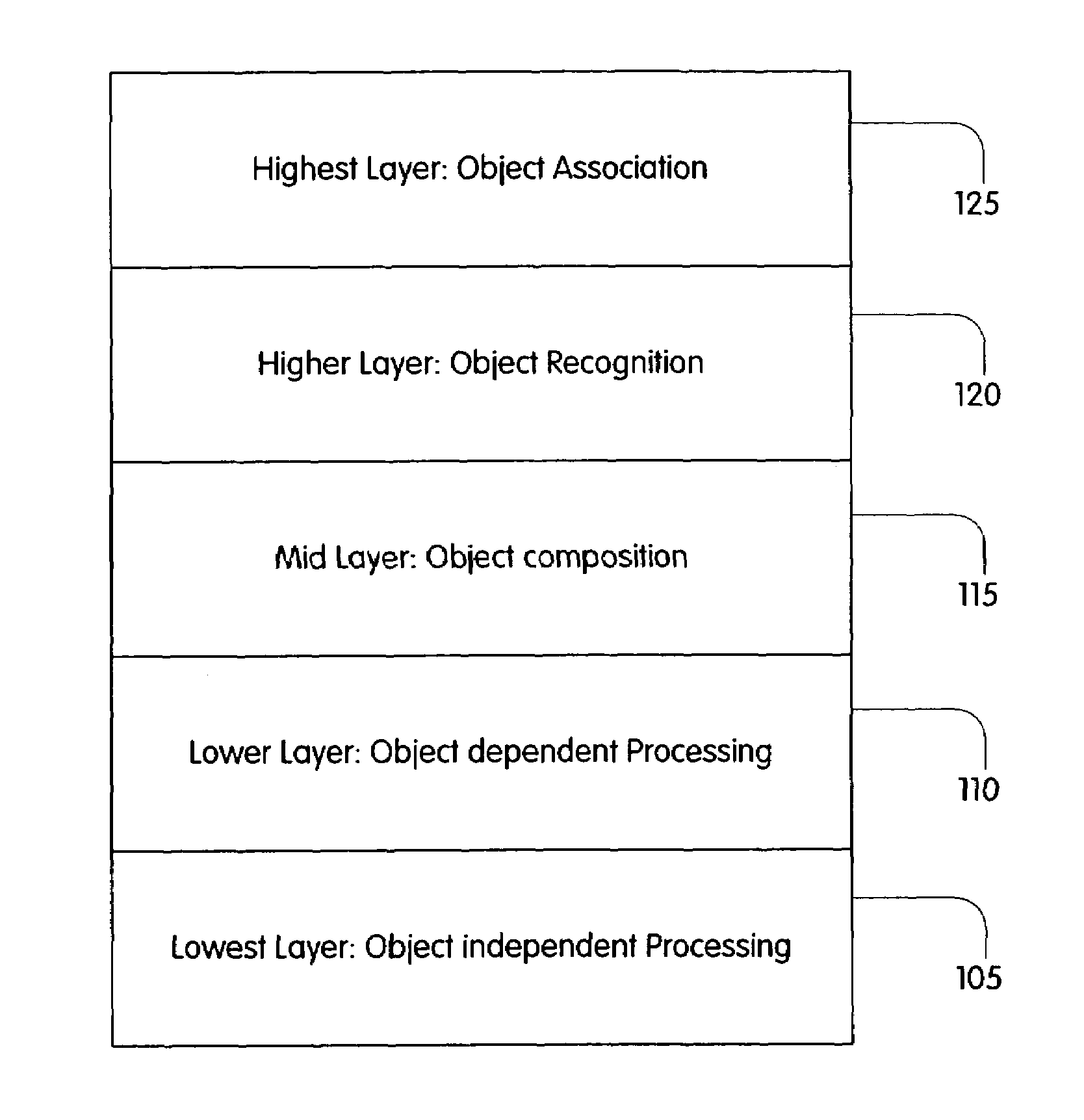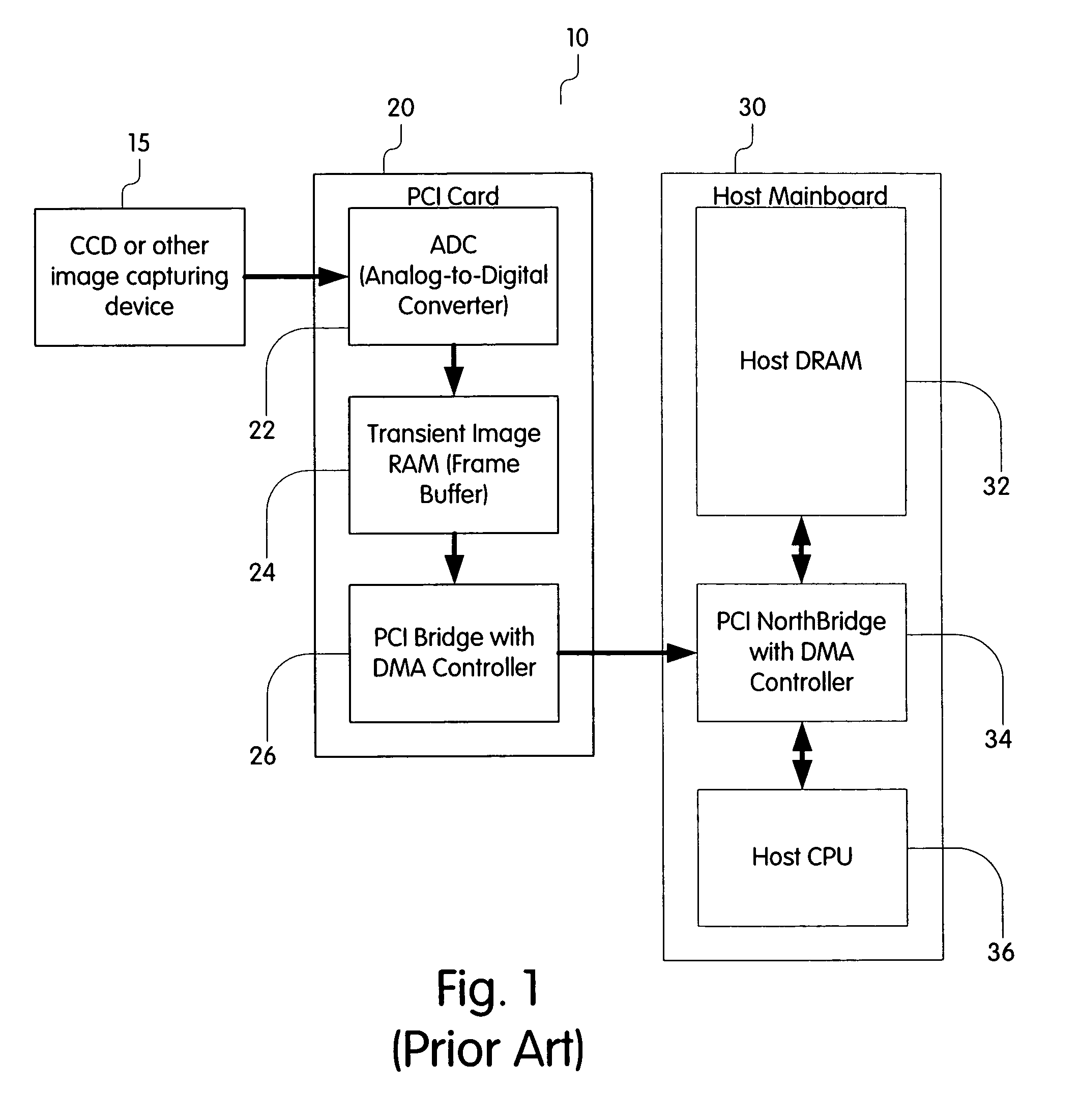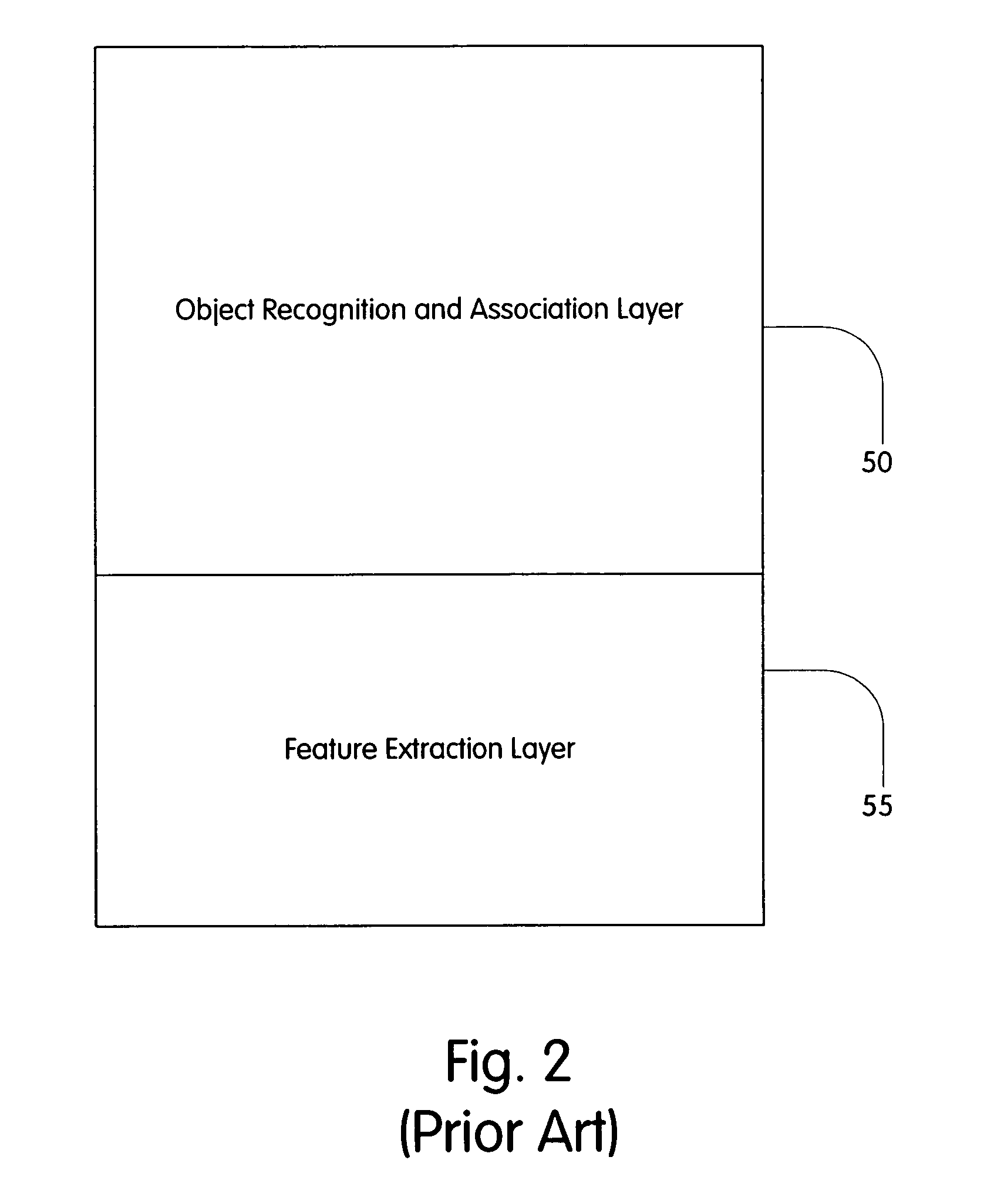Method and apparatus for image processing
a technology of image data and processing method, applied in the field of image data processing, can solve the problems of conventional computational systems becoming less effective for large-scale real-time image processing, systems with a limited throughput, and conventional computational systems deficien
- Summary
- Abstract
- Description
- Claims
- Application Information
AI Technical Summary
Benefits of technology
Problems solved by technology
Method used
Image
Examples
Embodiment Construction
[0019]FIG. 3 shows various processing layers (alternatively referred to hereinbelow as layers) of an image processing system adapted to process images, in accordance with one embodiment of the present invention. The image processing system of the present invention is shown in FIG. 3 as including 5 layers, namely an object independent processing layer 105, an object dependent processing layer 110, an object composition layer 115, an object recognition layer 120, and an object association layer 125. It is understood that object composition layer 115, object recognition layer 120, and object association layer 125, in combination, correspond to object recognition and association layer 50, as shown in FIG. 2 and hence are not described below. It is further understood that object composition layer 115, object recognition layer 120, and object association layer 125 may be combined into, for example, two layers.
[0020]In accordance with the present invention, object independent processing la...
PUM
 Login to View More
Login to View More Abstract
Description
Claims
Application Information
 Login to View More
Login to View More - R&D
- Intellectual Property
- Life Sciences
- Materials
- Tech Scout
- Unparalleled Data Quality
- Higher Quality Content
- 60% Fewer Hallucinations
Browse by: Latest US Patents, China's latest patents, Technical Efficacy Thesaurus, Application Domain, Technology Topic, Popular Technical Reports.
© 2025 PatSnap. All rights reserved.Legal|Privacy policy|Modern Slavery Act Transparency Statement|Sitemap|About US| Contact US: help@patsnap.com



